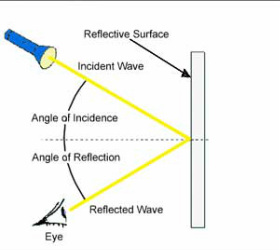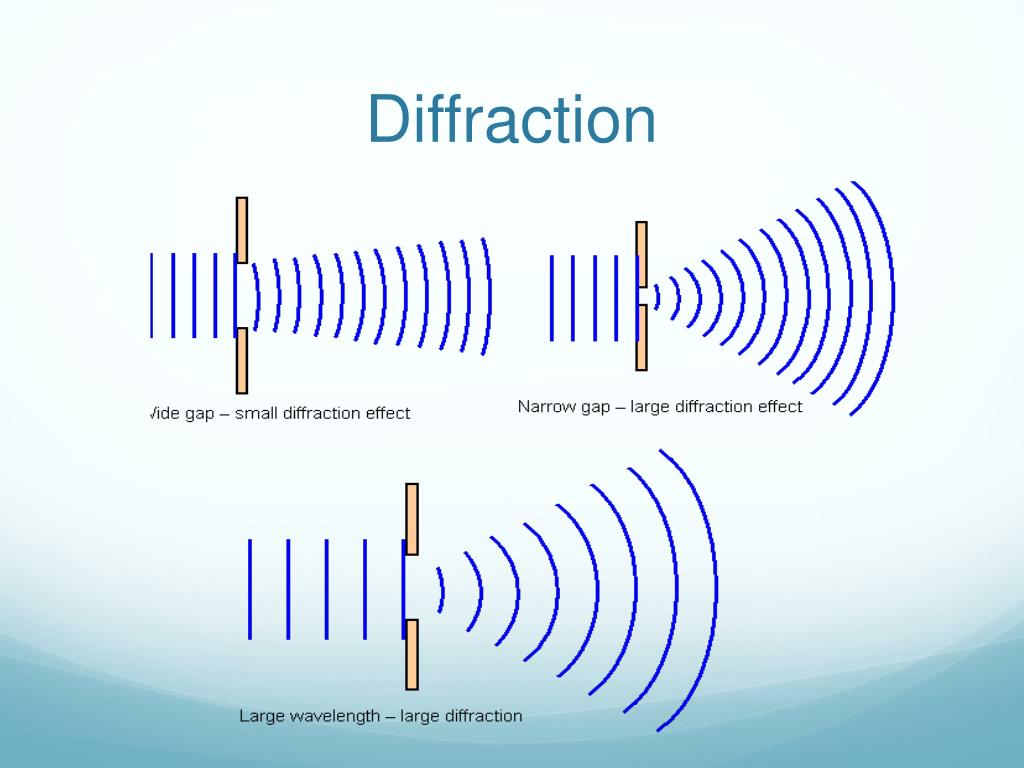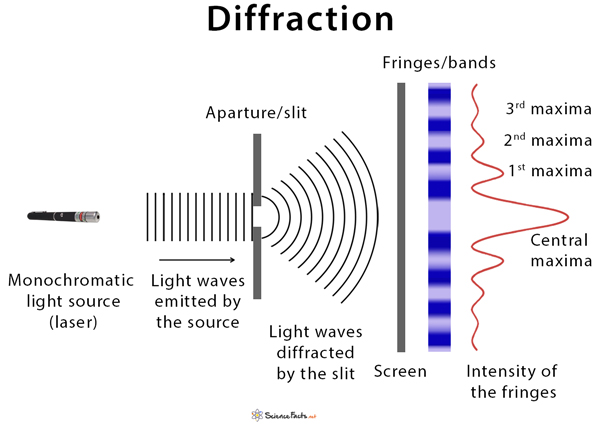

The parallel lines are actually diffraction patterns.
#Diffraction definition physics series
As the fingers approach each other and come very close together, you begin to see a series of dark lines parallel to the fingers. Diffraction is the bending of a wave around the edges of an opening or other obstacle.A very simple demonstration of diffraction of waves can be conducted by holding your hand in front of a light source and slowly closing two fingers while observing the light transmitted between them.The new wavefront is a line tangent to all of the wavelets. An accurate technique for determining how and where waves propagate is given by Huygens’s principle: Every point on a wavefront is a source of wavelets that spread out in the forward direction at the same speed as the wave itself.The amount of bending is more extreme for a small opening, consistent with the fact that wave characteristics are most noticeable for interactions with objects about the same size as the wavelength. The edges of the wavefront bend after passing through the opening, a process called diffraction. Huygens’s principle applied to a straight wavefront striking an opening. Thus the horizontal diffraction of the laser beam after it passes through slits in Chapter 27.1 Figure 1 is evidence that light is a wave. If diffraction is observed for some phenomenon, it is evidence that the phenomenon is a wave.

Diffraction is a wave characteristic and occurs for all types of waves. The bending of a wave around the edges of an opening or an obstacle is called diffraction. If we pass light through smaller openings, often called slits, we can use Huygens’s principle to see that light bends as sound does (see Figure 6). (b) Sound waves bend into all parts of the room, a wave effect, because their wavelength is similar to the size of the door. Since light’s wavelength is very small compared with the size of the door, it acts like a ray. (a) Light passing through a doorway makes a sharp outline on the floor. Each point on the wavefront emits a semicircular wave that moves at the propagation speed \boldsymbol, about three times smaller than the width of the doorway). A wavefront is the long edge that moves, for example, the crest or the trough. The new wavefront is a line tangent to all of the wavelets.įigure 2 shows how Huygens’s principle is applied. Starting from some known position, Huygens’s principle states that:Įvery point on a wavefront is a source of wavelets that spread out in the forward direction at the same speed as the wave itself. The Dutch scientist Christiaan Huygens (1629–1695) developed a useful technique for determining in detail how and where waves propagate. The direction of propagation is perpendicular to the wavefronts (or wave crests) and is represented by an arrow like a ray. A transverse wave, such as an electromagnetic wave like light, as viewed from above and from the side.

The view from above is perhaps the most useful in developing concepts about wave optics. The side view would be a graph of the electric or magnetic field. From above, we view the wavefronts (or wave crests) as we would by looking down on the ocean waves.

A light wave can be imagined to propagate like this, although we do not actually see it wiggling through space.


 0 kommentar(er)
0 kommentar(er)
